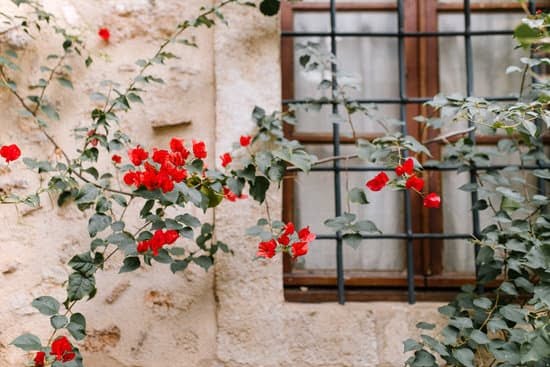Looking for prayer gardens ideas to create a peaceful and spiritual space for prayer and reflection? Prayer gardens offer a sanctuary for individuals seeking solace, connection, and a deeper sense of spirituality. In this article, we will explore the concept of prayer gardens and their significance in providing a tranquil and sacred space for quiet contemplation.
Prayer gardens can be located in various settings, including backyard spaces, community areas, and church grounds. The perfect location for a prayer garden is one that offers privacy, natural beauty, and a sense of serenity. Whether you are creating a small personal retreat or a larger community space, careful consideration of the location is essential to foster an atmosphere conducive to prayer and reflection.
In addition to the physical space, key design elements play a crucial role in creating an inviting ambiance within the prayer garden. Pathways, seating areas, water features, and carefully selected plants all contribute to enhancing the overall experience. Moreover, incorporating spiritual and religious symbols, statues, and artwork can help create a meaningful and sacred atmosphere within the garden. Stay tuned as we delve into these design elements in more detail in the following sections.
Location Inspiration
When it comes to creating a prayer garden, one of the most important considerations is selecting the right location. Whether you are planning to build a small personal space in your backyard or a larger community garden, the location plays a crucial role in setting the tone for the overall ambiance and experience.
For those looking to create a personal sanctuary, the backyard can be an ideal location for a prayer garden. It provides easy accessibility and convenience for daily reflection and prayer. Additionally, it allows for complete control over the design and layout of the garden, ensuring that it reflects your personal spiritual journey and preferences.
On a larger scale, community spaces such as parks or public gardens offer an opportunity to create a shared prayer garden that can bring people from different backgrounds and faiths together. Such locations can serve as peaceful havens for individuals seeking solace and spiritual connection in a serene environment.
Finally, churches and other religious institutions often have existing grounds that can be transformed into beautiful prayer gardens. These locations not only provide a sense of reverence but also allow for communal gatherings and spiritual events.
Overall, choosing the perfect location for a prayer garden involves careful consideration of accessibility, purpose, and potential for community involvement. Whether it’s in your own backyard or within a larger public space or religious institution, the key is to create an atmosphere that fosters peace, reflection, and spiritual connection.
| Prayer Garden Location | Features |
|---|---|
| Backyard | Personalization / Privacy |
| Community Spaces | Diversity / Shared Experience |
| Church Grounds | Spiritual Connection / Communal Gathering |
Design Elements
When designing a prayer garden, it is crucial to consider key design elements that will enhance the overall ambiance and create a peaceful and spiritual space for prayer and reflection. Pathways are an essential element in prayer garden design as they guide visitors through the space, providing opportunities for quiet contemplation and connection with nature. A well-designed pathway can incorporate natural materials such as stone or gravel, creating a sense of harmony with the surrounding landscape.
Another important design element for prayer gardens is seating areas. Comfortable and strategically placed seating allows visitors to sit and meditate, fostering a deeper connection to nature and spirituality. From simple benches to more elaborate seating arrangements, the goal is to provide ample opportunities for rest and reflection within the garden environment.
Water features are also a powerful design element in prayer gardens, offering both visual interest and soothing sounds that promote relaxation and contemplation. The addition of a small fountain, stream, or pond can create a sense of tranquility within the garden space, serving as a focal point for quiet reflection and spiritual connection.
Lastly, plant selections play a vital role in enhancing the overall ambiance of a prayer garden. Carefully chosen plants can evoke feelings of peace, beauty, and reverence. Consider incorporating fragrant flowers, symbolic trees or shrubs, and native plants that thrive in the local climate to create an inviting atmosphere for prayer and meditation.
By incorporating these key design elements into the layout of a prayer garden, it becomes possible to create an environment that not only promotes spiritual connection but also offers visitors a serene oasis for introspection and inner peace.
Creating a Sacred Space
When it comes to creating a prayer garden, incorporating spiritual and religious symbols, statues, and artwork can significantly enhance the overall ambiance of the space. These elements can help create a meaningful and sacred atmosphere that promotes inner peace and spiritual connection. Here are some tips on how to incorporate these elements into your prayer garden.
Symbolic Elements
One way to enhance the sacredness of your prayer garden is by incorporating symbolic elements that hold personal or religious significance. This could include incorporating religious scriptures, crosses, or other symbols from various faith traditions. These elements can serve as focal points within the garden and can help create a sense of reverence and spirituality.
Statues and Artwork
Including statues of religious figures or inspirational artwork can add depth and meaning to the garden space. Statues of saints, angels, or other revered figures can serve as focal points for prayer and reflection. Similarly, artwork depicting scenes from religious texts or inspiring quotes can contribute to the overall atmosphere of the prayer garden.
Create Meaningful Spaces
Consider creating designated areas within the garden for specific types of prayer or meditation. For example, a small alcove with a statue of a beloved saint could be used for individual prayers, while an area with religious artwork could be designated for group gatherings or communal prayer services. By creating these intentional spaces within the garden, you can cater to different needs for contemplation and reflection.
Incorporating these spiritual and religious elements into your prayer garden can help create a space that is not only visually stunning but also deeply meaningful and spiritually enriching for all who visit. Whether you draw inspiration from your own faith tradition or seek to create an inclusive space that welcomes people from diverse backgrounds, these elements will contribute to the overall sense of tranquility and divine connection in your prayer garden.
Quiet Reflection
When it comes to prayer gardens, creating spaces for quiet reflection, meditation, and prayer is essential. These areas provide individuals with a peaceful environment where they can connect with their spirituality and find solace away from the hustle and bustle of everyday life. Incorporating designated spots for these activities within a prayer garden allows visitors to fully immerse themselves in a tranquil and contemplative experience.
One idea for incorporating areas for quiet reflection in a prayer garden is to create secluded nooks surrounded by lush foliage or flowering plants. These secluded spots offer privacy and solitude, allowing individuals to engage in introspective practices without distraction. Additionally, adding comfortable seating options such as benches or cozy chairs encourages visitors to linger and spend time in silent contemplation or prayer.
Another consideration for designing spaces for meditation and quiet reflection in a prayer garden is to include elements that engage the senses. This could involve aromatic plantings such as lavender or jasmine, gentle water features that emit calming sounds, or tactile elements like smooth stones or textured paths. These sensory experiences can enhance the meditative atmosphere of the garden, encouraging visitors to fully engage with their surroundings as they seek moments of inner peace and spiritual connection.
Incorporating areas for quiet reflection within a prayer garden also provides opportunities for communal gatherings focused on meditation or group prayer sessions. The design of these spaces should allow for flexibility, accommodating both individual contemplation and group activities. By offering designated areas conducive to collective mindfulness practices, prayer gardens can serve as inclusive spaces that foster community bonding and shared spiritual experiences.
Seasonal Inspiration
One of the most beautiful aspects of prayer gardens is their ability to change and evolve throughout the seasons. Incorporating seasonal elements can enhance the overall atmosphere of the garden and provide a sense of connection to nature’s cycles. Here are some ideas for incorporating seasonal elements into your prayer garden:
- Blooming Flowers: One way to add seasonal beauty to your prayer garden is by selecting a variety of flowers that bloom at different times throughout the year. This ensures that there will always be a colorful display to enjoy, no matter the season. Consider planting tulips and daffodils for spring, sunflowers and zinnias for summer, chrysanthemums for fall, and hellebores for winter.
- Seasonal Color Schemes: Another way to embrace the changing seasons in your prayer garden is through a carefully curated color scheme. For example, you might choose bright and cheerful colors for spring and summer, such as yellows, pinks, and purples, while opting for deeper, richer hues like reds, oranges, and browns for fall.
- Special Events for Prayer Services: Hosting special events in your prayer garden can be a meaningful way to engage with your community throughout the year. Consider organizing outdoor prayer services or meditation sessions during significant times of the year, such as solstices, equinoxes, or religious holidays. You could also plan seasonal gardening workshops or volunteer days where community members can come together to plant new seasonal additions to the garden.
By embracing all that each season has to offer in terms of natural beauty and spiritual significance, you can create a dynamic and ever-changing prayer garden that provides an enriching experience for visitors year-round. These ideas not only bring life and vibrancy to the space but also serve as a reminder of the cyclical nature of life and spirituality.
Prayer gardens have great potential for utilizing seasonal inspiration as they provide an opportunity for reflection on growth and change in both nature and personal spirituality throughout each season.
Community Involvement
Prayer gardens hold great significance in providing a peaceful and spiritual space for individuals to pray, reflect, and connect with their spirituality. In addition to serving as personal sanctuaries, prayer gardens can also benefit from community involvement in their planning and maintenance. Involving the community in the creation and care of prayer gardens not only fosters a sense of ownership but also contributes to a deeper sense of connection and unity among its members.
There are several benefits to involving the community in the planning and maintenance of prayer gardens. By inviting community members to participate in the design process, you can tap into a wealth of creativity, expertise, and ideas that can enhance the overall ambiance of the space.
Furthermore, engaging volunteers in the ongoing care and upkeep of the garden ensures that it remains well-tended and thriving for years to come. This shared responsibility fosters a greater sense of pride and ownership among those who contribute their time and effort.
One way to involve the community in maintaining prayer gardens is through volunteer opportunities. Establishing regular volunteer days or garden work parties can bring people together to tend to various tasks such as planting, weeding, watering, and general upkeep.
This collaborative effort not only lightens the workload but also allows participants to form meaningful connections with one another while nurturing the garden space. Additionally, it provides an opportunity for individuals with varying levels of gardening experience to learn from each other and develop new skills.
Fundraising efforts can also play a significant role in supporting prayer gardens within the community. Whether through donations, sponsorships, or special events, fundraising activities can help cover maintenance costs, purchase new plants or features for the garden, and support any planned enhancements.
By involving local businesses, organizations, and individuals in these efforts, you not only secure financial backing but also raise awareness about the value that prayer gardens bring to the community’s well-being. Whether it’s through volunteerism or fundraising initiatives, involving the community in prayer gardens can create a deepened sense of connection while promoting both individual spiritual growth and communal solidarity.
Maintenance and Care
Sustainable Gardening Practices
Creating and maintaining a prayer garden requires careful consideration of sustainable gardening practices to ensure the longevity and health of the space. Implementing eco-friendly methods such as composting, mulching, and natural pest control can help reduce the environmental impact of the garden. Additionally, choosing native plants that are well-suited to the local climate and soil conditions can minimize water usage and maintenance needs while supporting the local ecosystem.
Watering Schedules
Establishing a consistent watering schedule is crucial for maintaining a healthy prayer garden. It’s essential to water the plants early in the morning or late in the evening to prevent water evaporation and ensure that the roots receive adequate moisture. Investing in efficient irrigation systems, such as drip irrigation or soaker hoses, can help conserve water and provide targeted hydration to the plants. Monitoring weather conditions and adjusting watering schedules accordingly is also important for preventing overwatering or underwatering.
Ongoing Upkeep
Regular maintenance is essential for preserving the beauty and functionality of a prayer garden. This includes tasks such as weeding, pruning, fertilizing, and cleaning pathways and seating areas. It’s important to establish a routine maintenance schedule to address these ongoing upkeep needs.
Engaging volunteers from the community in regular gardening days can be beneficial for both fostering a sense of ownership among participants and ensuring that the workload is shared. Encouraging individuals to adopt specific areas within the garden for personalized care can also contribute to a sense of communal responsibility for its upkeep.
Conclusion
In conclusion, prayer gardens are not just a place for physical beauty, but they are also an oasis for the soul. The ideas discussed in this article offer inspiration for creating these sacred spaces and highlight the importance of prayer gardens as a means of promoting inner peace, spiritual connection, and a sense of community. The significance of prayer gardens lies in their ability to provide a tranquil environment where individuals can find solace, reflect, and connect with their spirituality.
By choosing the perfect location, incorporating key design elements, and creating a sacred space with spiritual symbols and artwork, prayer gardens offer a sanctuary for quiet reflection and meditation. Moreover, the inclusion of seasonal elements and community involvement further enhances the impact of these gardens as places for spiritual growth and shared experiences.
In essence, prayer gardens serve as an invitation to pause from the busyness of life and embrace meaningful moments of introspection and connection. They provide an opportunity to cultivate a deeper spiritual practice while fostering a sense of unity within communities.
As individuals come together to share in the care and upkeep of these special places, they too become united in purpose and faith. Therefore, prayer gardens truly have the power to promote inner peace, spiritual connection, and a sense of community like no other space can.
Frequently Asked Questions
What Are the Elements of a Prayer Garden?
The elements of a prayer garden typically include natural features like flowers, trees, and water elements to create a peaceful and contemplative atmosphere. Many prayer gardens also have benches, walking paths, and statues for reflection.
How Do You Make a Prayer Garden?
Making a prayer garden involves careful planning and design. It starts with selecting a suitable location with good natural light and space for different elements like plants, seating areas, and paths. Then, consider the types of foliage and flowers that would foster a sense of peace and serenity.
What Is the Purpose of a Prayer Garden?
The purpose of a prayer garden is to provide a tranquil setting for individuals to connect with their spirituality through prayer or meditation. It offers a place of solitude and beauty where people can find solace, reflect on their faith, and seek inner peace amidst nature’s calming influence.

Welcome to my gardening blog! I am passionate about plants and enjoy sharing my knowledge and experiences with others. In this blog, I will write about everything related to gardening, from tips on how to get started to updates on my own garden projects.





